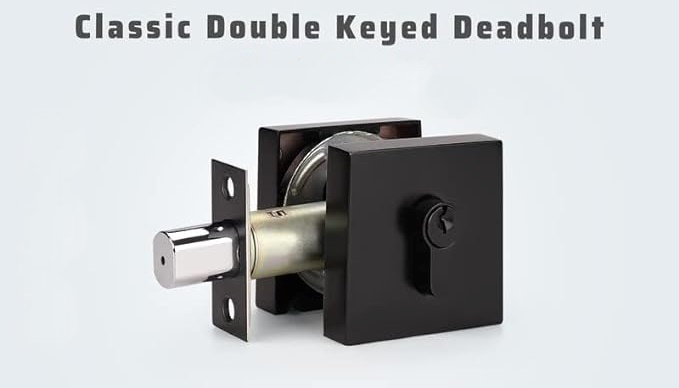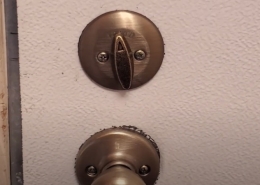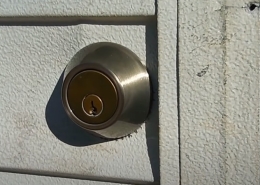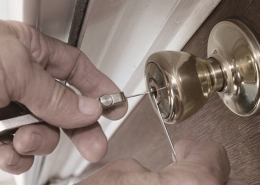Deadbolt vs. Deadlock: Key Difference and How to Choose?
As technology and design have evolved, so have the types of locks available in the market. Two of the myriad options stand out due to their popularity and efficacy: the deadbolt and the deadlock.
This article aims to delve into the intricacies of these two locks, comparing their features, functionalities, and respective roles in bolstering home security.
While both deadbolts and deadlocks are designed to secure doors against unauthorized entry, the key difference lies in their mechanism and operation.
Deadbolts are a type of deadlock with a bolt mechanism operated by a key or thumb turn, known for their high security. However, the term “deadlock” can refer to any locking mechanism that cannot be moved to the open position without the correct key, including deadbolts.
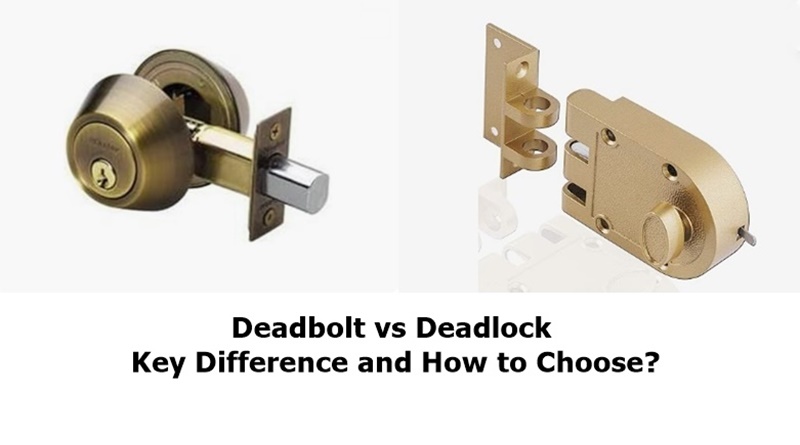
What’s the Key Differences Between Deadbolt vs. Deadlock?
Deadbolt and deadlock are terms often used interchangeably to describe security features for doors, but they refer to mechanisms with distinct characteristics and applications. Here are the key differences between a deadbolt and a deadlock:
Deadbolt
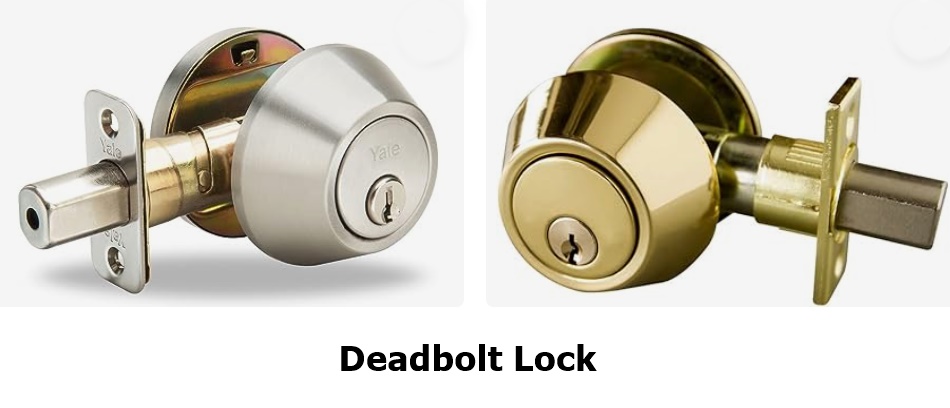
- Mechanism: A deadbolt is a locking mechanism that moves a solid metal bolt from the door into the door frame’s strike plate. It is operated by a key or a thumb turn from the inside.
- Types: There are several types of deadbolts, including single-cylinder (operated with a key from outside and a thumb turn from inside) and double-cylinder (requires a key to operate from outside and inside).
- Security Level: Deadbolts are considered highly secure due to the strength of the bolt and the lack of a spring mechanism, making them more resistant to forced entry techniques like picking, bumping, or using a credit card.
- Installation: They are usually installed on external doors in residential and commercial properties for added security.
- Accessibility: Single-cylinder deadbolts are more common and provide a good balance between security and convenience, while double-cylinder deadbolts offer higher security but can pose a safety risk in emergencies if the key is not readily available.
Deadlock
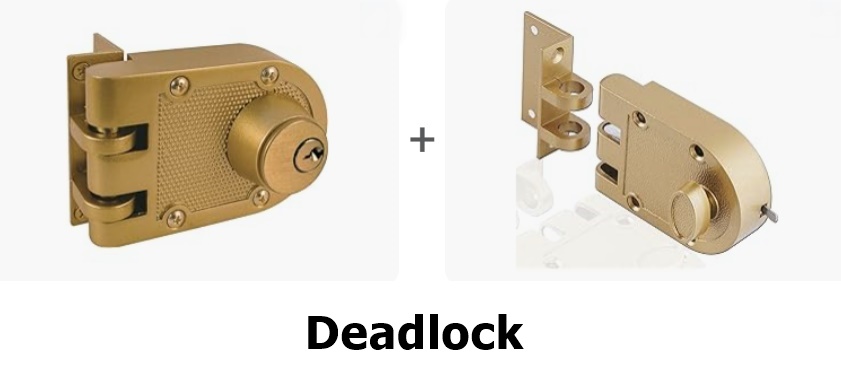
- Mechanism: A deadlock is a lock mechanism that can be engaged or disengaged with a key or turn knob. When engaged, it cannot be moved to the open position without the correct key.
- Types: Deadlocks can vary in design, but they typically involve a bolt that extends into a strike plate on the door frame, similar to a deadbolt. However, the term “deadlock” can also refer to a broader category of locks that includes deadbolts.
- Security Level: Deadlocks provide a high level of security because they can only be opened with the correct key, making them resistant to forceful entry. The term can sometimes refer to locks with a deadlocking feature, preventing the bolt from being retracted by force.
- Installation: Deadlocks are installed on external doors but can also be used on internal doors where high security is desired.
- Accessibility: Depending on the type, deadlocks may require a key to operate from inside and outside, which can be a disadvantage in emergencies.
The choice between a deadbolt and a deadlock (or a specific type of deadlock) will depend on the desired balance between security needs and convenience.
Security Level
When comparing the security levels of deadbolts and deadlocks, it’s essential to understand that both are designed to provide high security for doors against unauthorized entry. However, the security level can vary based on the lock’s specific features, design, and installation quality.
Deadbolt Security Level
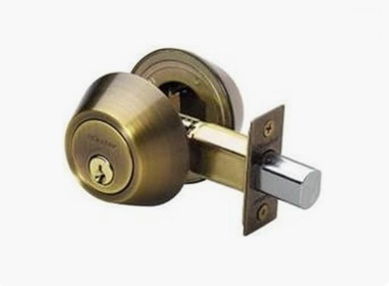
- High Security: Deadbolts are renowned for their robustness and resistance to common burglary techniques, such as lock picking, bumping, and brute force attacks. The absence of a spring mechanism in the bolt makes it harder for intruders to compromise the lock.
- Single vs. Double Cylinder: Single-cylinder deadbolts are less secure than double-cylinder models because an intruder can potentially exploit the presence of a thumb turn on the inside if they manage to reach it (e.g., through a nearby window). Double-cylinder deadbolts require a key to unlock from both the inside and outside, offering higher security but posing potential safety issues in emergencies.
Deadlock Security Level
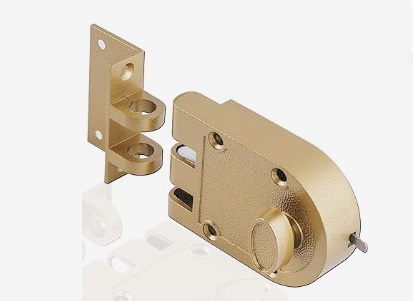
- Varies with Design: The term “deadlock” can refer to various locks, including deadbolts. Generally, deadlocks are designed to be secure, with the bolt mechanism engaging directly with the door frame, making them resistant to forceful entry.
- Deadlocking Feature: Many deadlocks have a deadlocking feature, which prevents the bolt from being retracted by force or manipulation when the lock is fully engaged. This feature adds an extra layer of security.
Double-cylinder deadbolts and deadlocks with deadlocking features provide strong resistance to unauthorized entry.
It’s also worth noting that the highest level of security often comes from using locks in conjunction with other security measures, such as strike plates, security cameras, and alarm systems. Proper door and frame strength is equally important, as the lock’s effectiveness partially depends on the door and frame’s resistance to forceful entry.
Ease of Use
When comparing deadbolts and deadlocks in terms of ease of use, it’s important to consider how these locks operate daily for users.
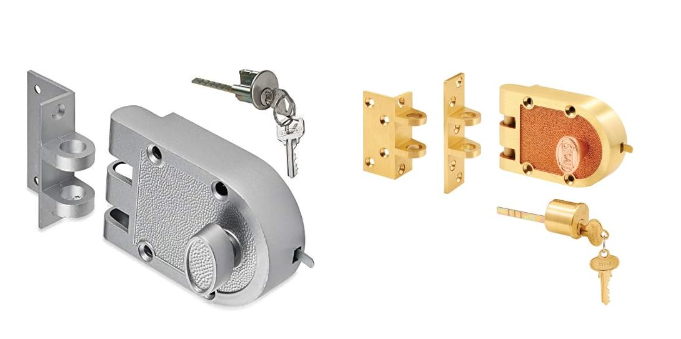
Deadbolt Ease of Use
- Operation: Deadbolts are typically operated by a key from the outside and either a key or a thumb turn from the inside. Single-cylinder deadbolts, with a thumb turn on the inside, are particularly user-friendly as they allow easy locking and unlocking from within without needing a key.
- Accessibility: Single-cylinder deadbolts strike a good balance between security and ease of use, as they can be quickly and easily unlocked in an emergency, providing a clear egress route without needing a key.
Deadlock Ease of Use
- Operation: The term “deadlock” can encompass various locking mechanisms, including those operated by keys from both sides or a key on one side and a thumb turn on the other. The ease of use can vary depending on the specific design. For example, a deadlock that requires a key for operation from both inside and outside might be seen as less convenient in everyday use.
- Safety Considerations: Deadlocks that require a key on the inside might pose safety concerns in emergencies where quick egress is necessary. This could complicate their use, especially in environments where rapid evacuation is a priority.
Regarding ease of use, single-cylinder deadbolts generally offer a convenient balance between security and operational simplicity, particularly because of their thumb-turn feature for easy locking and unlocking from the inside.
Depending on their design, Deadlocks may require keys for operation from both sides, which could be seen as less convenient for daily use but might offer higher security.
Price
The price of deadbolts and deadlocks can vary significantly based on several factors, including the brand, material quality, security features, and whether the lock includes smart technology. Here’s a general overview of pricing for both types of locks to give you an idea of what to expect:
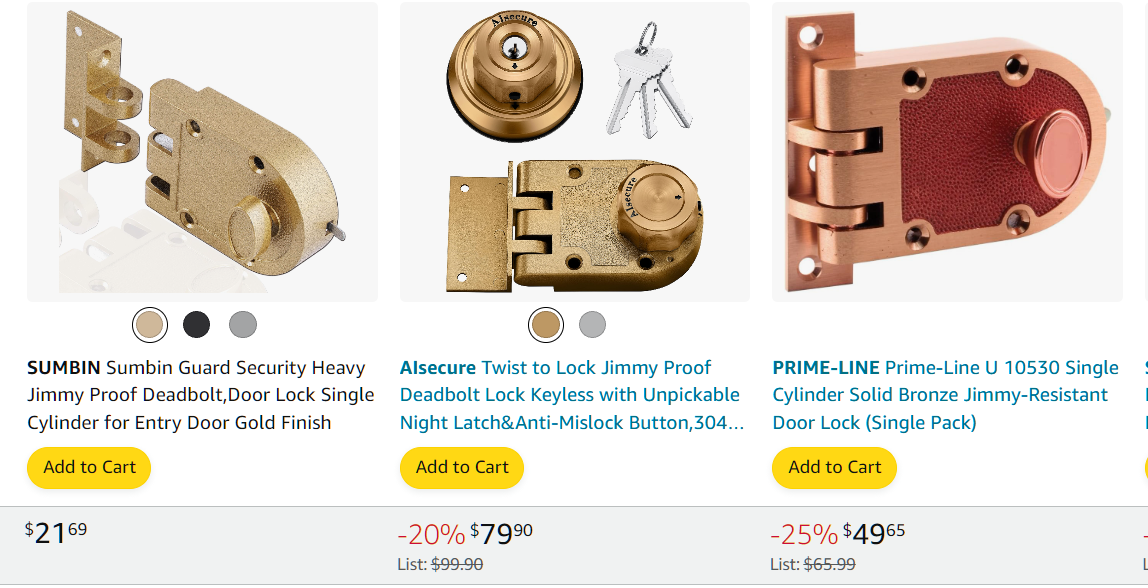
Deadbolt Prices
- Basic Single-Cylinder Deadbolts: These are the most affordable, with prices starting from as low as $15 to $30 for basic models from less-known brands. They offer standard security and are suitable for residential use.
- Double-Cylinder Deadbolts: These tend to be slightly more expensive due to the added security feature requiring a key for operation from both sides. Prices for double-cylinder deadbolts can range from $30 to $50 for standard models.
- High-Security Deadbolts: Prices for locks designed to meet higher security standards (e.g., ANSI Grade 1) can range from $50 to over $100, depending on the brand and features. These locks often have reinforced designs, are resistant to picking, drilling, and sawing, and might include patented keyways.
- Smart Deadbolts: With features such as remote access, keyless entry, and integration with home automation systems, smart deadbolts are at the higher end of the price spectrum. Depending on the technology and brand, prices typically range from $100 to $300 or more.
Deadlock Prices
- Standard Deadlocks: The price for standard deadlocks not equipped with smart technology starts at around $20 to $40. These locks provide a good level of security for residential doors and are comparable to basic single-cylinder deadbolts in price.
- High-Security Deadlocks: Prices for deadlocks designed for higher security levels, such as those with complex keyways, reinforced bodies, or deadlocking features, can vary widely. However, they generally start around $50 and can go up to $200 or more for top-of-the-line models.
- Commercial Grade Deadlocks: Deadlocks intended for commercial use, which may require meeting specific security certifications, can range from $100 to several hundred dollars, depending on the security features and durability.
- Smart Deadlocks: While less common than smart deadbolts, smart deadlock options exist and typically fall into the higher price range, similar to smart deadbolts, due to their advanced features and technology.
The price of deadbolts and deadlocks will depend largely on their security level, the materials used, brand reputation, and additional features like smart technology. Basic models are quite affordable and suitable for standard residential security needs. In contrast, high-security and smart lock models represent a higher investment but offer enhanced security features and convenience.
Installation
The installation process for deadbolts and deadlocks can vary depending on the type of lock, the door’s material, and the existing door hardware. Here’s a general overview of what each installation entails, along with considerations that might affect the complexity and cost of installation.
Deadbolt Installation
- DIY Friendly: Single-cylinder and double-cylinder deadbolt installations are generally considered DIY-friendly for those with basic handyman skills. Many residential doors are pre-drilled with holes that may only need minor adjustments to fit a standard deadbolt.
- Time and Cost: For DIY installation, the primary cost is the deadbolt itself, with minimal additional costs for any tools or accessories not already on hand. Depending on the complexity and local rates, professional installation can add $50 to $200 to the overall cost.
Deadlock Installation
- Professional installation Recommended: While many deadlocks can be installed by a competent DIYer, professional installation is often recommended for higher-security models or locks that are part of a more comprehensive security system. This ensures that the lock is installed correctly and functions as intended.
- Time and Cost: Similar to deadbolts, the DIY installation will primarily involve the cost of the lock and any necessary tools. Professional installation costs vary based on the lock’s complexity, door material, and labor rates in your area.
Someone with moderate DIY skills can install both deadbolts and deadlocks, but the complexity of the installation can vary based on the specific type of lock and the door.
While many homeowners can install a basic deadbolt or deadlock, professional installation may be preferable for enhanced security models, integration with other security systems, or ensuring compliance with security standards and building codes.
Can These Locks Be Picked or Bypassed?
Deadbolts, especially higher-grade ones, are designed to resist picking. However, many traditional deadbolts can be picked with specialized tools and expertise. Advanced deadbolts often come with anti-picking features to counteract this vulnerability.
Like deadbolts, deadlocks can be susceptible to picking, especially if they aren’t high quality or lack anti-picking features. Due to their design, some deadlocks might be more resistant to bypassing than others. However, when applied with the right tools, certain techniques can compromise a deadlock.
Which is more secure: deadlock or deadbolt?
Deadbolts are generally considered very secure, especially when well-made and properly installed. The double-cylinder deadbolt offers high security but can pose risks in emergencies if the key is not easily accessible.
Deadlocks provide a high level of security because they require a key to operate from both sides, but they can be a safety risk in emergencies. They are often used in commercial properties or where high security is a primary concern.

